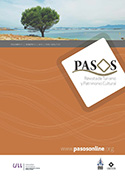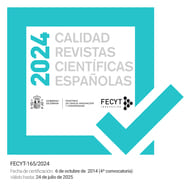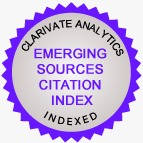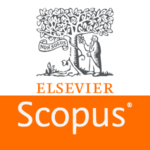El reconocimiento de los espacios intelectuales como patrimonio cultural: una perspectiva territorial
DOI:
https://doi.org/10.25145/j.pasos.2013.11.030Keywords:
patrimonio cultural, lugares intelectuales, geografía, espacios urbanos, historia culturalAbstract
Esta contribución ilustra, junto con la literatura más actualizada, la evolución del concepto de patrimonio cultural y cómo la geografía contribuyó a esta revisión epistemológica de la idea. Esta visión es el punto de partida de la investigación que aquí se presenta. Se trata de los lugares elegidos por los intelectuales de la época moderna como centros de actividades culturales: las academias y los cafés literarios. Estos lugares han sido olvidados, pero representan espacios significativos tanto en las grandes como en las pequeñas ciudades y pueblos de Europa y en particular en Italia. Su reconocimiento como patrimonio cultural nos permite comprender mejor la identidad europea e incluir las academias y los cafés literarios en las rutas turísticas.
Downloads
Publication Facts
Reviewer profiles N/A
Author statements
- Academic society
- PASOS. Revista de Turismo y Patrimonio Cultural
- Publisher
- Instituto Universitario de Investigación Social y Turismo. Universidad de La Laguna (España) - Instituto Universitario da Maia ISMAI (Portugal)
References
Ashworth, G. J. 1994 “From History to Heritage-From Heritage to Identity, In search of concepts and models”, In G. J. Ashworth and P.J. Larkham (Eds), Building a New Heritage. Tourism, Culture and Identity in the New Europe (pp. 13-30). London: Routledge.
Bellezza, G. 2003 Geografia e beni culturali, Milano: Franco- Angeli.
Blake, J. 2000 “On Defining the Cultural Heritage”, International and Comparative Law Quarterly, 49, pp 61-85.
Bowitz, E. & Ibenholt, K. 2009 “Economic impacts of cultural heritage – Research and perspectives”, Journal of Cultural Heritage, 10(1): 1-8.
Bruns, D. 2007 “Integration of landscapes in national policies: urban, peri-urban and sub-urban landscape”. In Meeting of the Council of Europe on “the european landscape convention” , available: www. Coe.int/.
Chapa, R. C. 2007 “Los problemas sociales en los espacios patrimoniales históricos”. In IX Coloquio Internacional de Geocrítica Los problemas del mundo actual soluciones y alternativas desde la geografía y las ciencias socials. available: www.geocritica.it.
Clark, P. (ed) 2002 Small towns in Early Modern Europe. Cambridge: University of Cambridge.
Classen, A. (ed) 2009 Urban space in the Middle Ages and the Early Modern Age. Berlin: Hubert & Co.
Claval, P. 1995 La géographie culturelle, Paris: Nathan.
Corna Pellegrini, G. 2004 Geografia dei valori culturali, Roma: Carocci.
Delort, R. & Walter, F. 1998 Histoire de l’environnement européen, Paris: Presses Universitaires de France.
Ellis, M. 2004 The Coffee House: a cultural history, Weidenfeld & Nicolso.
Falqui, E. (ed) 1962 Caffè letterari. Roma: Canesi Editore.
Famoso, N. 1998 “Il concetto di bene culturale e la sua recente evoluzione ed applicazione”, In L.Viganoni ( eds) Temi e problemi di Geografia in memoria di Pietro Mario Mura, Roma: Gangemi editore, pp. 83-88.
Francioni, F. 2004 “Beyond State Sovereignty: The Protection of Cultural Heritage as a Shared Interest of Humanity, HeinOnline, pp. 1229-1234.
Friedell, E. 2008 A cultural history of the modern age. New Jersey: Transaction Publishers.
Gillman, D. 2010 The idea of cultural heritage. Cambridge: Cambridge University Press.
Graham, B. 2002 “Heritage as knowledge: Capital or culture?”, Urban studies, 39, pp. 1003-1017.
Herdy, D. 2004 “Historical geography and heritage studies”, Area, 20, pp. 333-338.
Kalay, Y. E., Kvan, T. & Affleck, J. 2007 New Heritage, new media and cultural heritage. New York: Routledge.
Kurin, R. 2004 “Safeguarding Intangible Cultural Heritage in the 2003 UNESCO Convention: a critical appraisal”, Museum International, 56, pp. 66-77.
Le Goff, L. 1982 Time, work and culture in the Middle Ages, Chicago: The University of Chicago.
Graff, G. 2007 Professing Literature An istitutional history, Wentieth Anniversary Edition.
Li, W., Min, Q. & Sun, Y. 2006 “Discussion on the scientific research of natural and cultural heritage”, Geographical Research, 4.
Loulanski, T. 2006. “Revising the Concept for Cultural Heritage: The Argument for a Functional Approach”, International Journal of Cultural Property, 13, pp. 207-233;
Lowenthal, D. 2005 “Natural and cultural heritage”, International Journal of Heritage Studies, 11: 81-92.
Meylender, M. 1926-1930 Storia delle Accademie d’Italia. Bologna: Cappelli, voll. 5.
Nasser, N. 2003 “Planning for Urban Heritage Places: Reconciling Conservation, Tourism, and Sustainable Development”, Journal of Planning Literature,17: 467-479.
Pickard, R. 2002 European cultural heritage. Council of Europe.
Poli, E. 2012 “Paesaggio geografico e pianificazione territoriale”, in Ambiente Società Territorio, 1: 25-29.
Pollice, F. 2011 “La cultura nella costruzione della competitività urbana”. In V. Amato (ed). Questioni urbane del Mezzogiorno, Roma: Aracne, pp. 57-90.
Quaini, M. 2008 “Poiché niente di quello che la storia sedimenta va perduto”, Quaderni Storici, 127.
Quondam, A. 1982 “L’Accademia”. In Letteratura Italiana Il letterato e le istituzioni. Torino: Einaudi, vol I: 823-898.
Raffestin, C. 2005 Dalla nostalgia del territorio al desiderio di paesaggio. Firenze: Alinea.
Rizzo, I. & Trosby, D. 2006 “Cultural Heritage: economic analysis and public policy”, In Handbook on the Economics of Art and Culture, 983-1016.
Roca, Z., Claval, P. & Agnew, J. (eds), 2011, Landscapes, identities, development, England: Ashgate Publishing Limited.
Rombai, L. 2002 Geografia storica dell’Italia. Firenze: Le Monnier. Ruocco, D. 1979 “Beni culturali e geografia”, Studi e Ricerche di Geografia, n.1, pp. 1-16.
Sarno, E. 2003 “Il territorio del letterato: gli spazi della produzione intellettuale”, Geotema 20, pp. 51-58;
Sarno, E. 2006 “Los procesos geo-culturales en la edad moderna: el desarrollo de las academias en el Sur de Italia”, Scripta Nova Revista Electrónica de Geografía y Ciencias Sociales, Vol.X, num.18 (63), available: www.geocritica.it.
Sarno, E. 2007 “European Identity and Intellectual Places”. In First International Conference on the Geography of Europe, Book of abstracts, p.1.
Sarno, E. 2009a “Spazi intellettuali nel Regno di Napoli: l’Accademia degli Inculti di Agnone”. In P. Persi. (ed) Territori Contesi Atti del IV Convegno Internazionale Beni Culturali. Università degli Studi di Urbino, pp. 523-527.
Sarno, E. et al. (eds) 2009b Beni ambientali e culturali Una lettura interdisciplinare, Campobasso: Palladino Editore.
Silverman, H. & Ruggles, D. F. 2008 Cultural heritage and human rights. USA: Springer.
Smith, L. 2006 Uses of heritage. New Jork: Routledge.
Sorrenti, P. 1965 Le Accademie in Puglia dal XV al XVIII secolo. Bari.
Standage, T. 2006 A History of the World in Six Glasses. Walker & Company.
Tweed, C. & Sutherland, M. 2007 “Built Cultural heritage and sustainable urban development”, Landscape and Urban Planning, 83, pp.62-69.
Timothy, D J. & Boyd S. W. 2003 Heritage tourism. Pearson Education Limited.
Timothy, D J. & Nyaupane, G. P. 2009 Cultural heritage and tourism in the developing world: a regional perspective. Taylor & Francis e-Library.
Turnpenny, M. 2004 “Cultural Heritage, an Ill-defined Concept?”, A Call for Joined up Policy, 10, pp. 295-307.
Turri, E. 2003 Il paesaggio degli uomini. La natura, la cultura, la storia. Bologna: Zanichelli.
Vallega, A. 2007 Geografia Culturale Luoghi, spazi, simboli. Torino: UTET.
Vecco, M. 2010 “A definition of cultural heritage: From the tangible to the intangible”, Journal of Cultural Heritage, 11, n. 3, pp. 321-324.
Weinberg, A. & Bealer, B. K. 2002 The World of Caffeine: The Science and Culture of the World’s Most Popular Drug. Routledge.
Wild, A. 2005 Coffee A Dark history. Norton & Company.
Yasar, A. 2003. The Coffeehouses in Early Modern Istanbul: Public Space, Sociability and Surveillance. Bogaziçi Üniversitesi: MA Thesis.
Zhang, B. & Cheng, W. 2008 “The Cultural Tourism and the Protection of Intangible Heritage”, Human Geography, 23, 1, pp.74-79.
Downloads
Published
How to Cite
Issue
Section
License
I confirm that the work is original (of my/our authorship), and that it will not be submitted to other journals or publications until the final resolution of the review process in PASOS, RTPC.
I authorize the publication of my work by PASOS, PSTN of free and open access in any of the formats that I deem appropriate, for an indefinite period of time and as a non-remunerated collaboration.
Likewise, the author(s) understands that the published work may be linked or deposited on any server or included in other publications (republication), provided that the new place and/or new edition references the original publication and acknowledges the authorship and copyright ownership of PASOS RTPC publications.
Authors understand that a plagiarism-self-plagiarism check will be performed, and the article may be removed at any time from the editorial flow.










